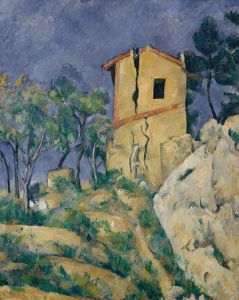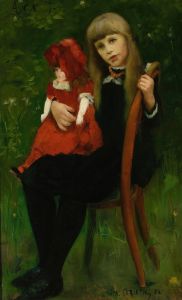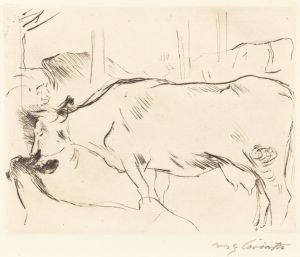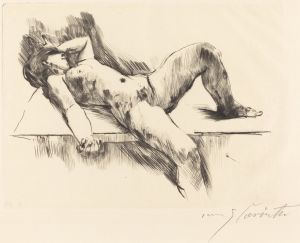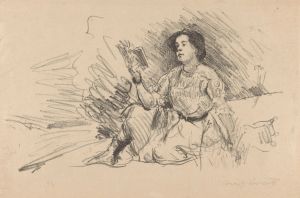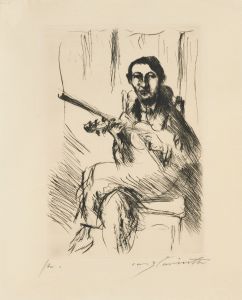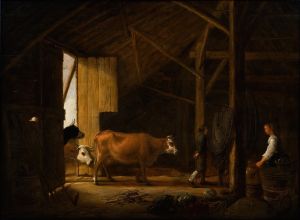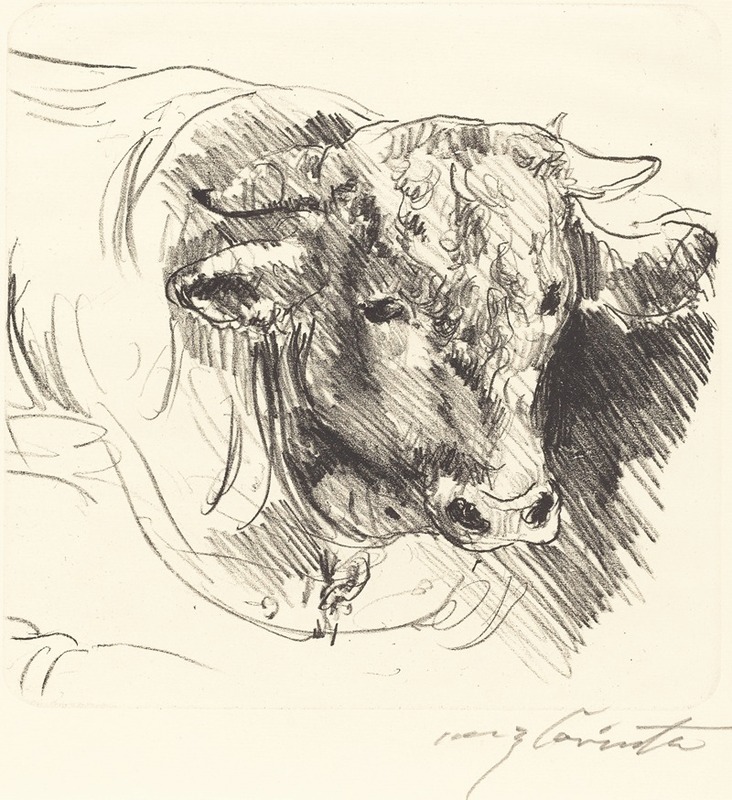
Head of a Steer
A hand-painted replica of Lovis Corinth’s masterpiece Head of a Steer, meticulously crafted by professional artists to capture the true essence of the original. Each piece is created with museum-quality canvas and rare mineral pigments, carefully painted by experienced artists with delicate brushstrokes and rich, layered colors to perfectly recreate the texture of the original artwork. Unlike machine-printed reproductions, this hand-painted version brings the painting to life, infused with the artist’s emotions and skill in every stroke. Whether for personal collection or home decoration, it instantly elevates the artistic atmosphere of any space.
Lovis Corinth's Head of a Steer is a painting created by the German artist, who is widely recognized as a key figure in the transition from Impressionism to Expressionism. Corinth, born in 1858 in Tapiau (now Gvardeysk, Russia), was known for his dynamic brushwork, vivid use of color, and ability to capture both the physical and emotional essence of his subjects. His works often included portraits, landscapes, and still lifes, as well as depictions of animals.
Head of a Steer is an example of Corinth's interest in animal studies, a subject he explored throughout his career. The painting portrays the head of a steer with striking realism and vitality, emphasizing the texture of the animal's fur and the expressive quality of its gaze. Corinth's loose, energetic brushstrokes and attention to light and shadow give the work a sense of immediacy and life. The painting reflects his ability to combine naturalistic detail with a more painterly, expressive approach.
The exact date of the painting is not widely documented, but it is consistent with Corinth's broader body of work, which often included studies of animals as part of his exploration of nature and the human-animal connection. Corinth's animal studies were likely influenced by his academic training and his exposure to the works of earlier masters who also depicted animals with great sensitivity.
Lovis Corinth's career was marked by significant personal and artistic developments. After studying art in Königsberg, Munich, and Paris, he became a prominent member of the Berlin Secession, an art movement that sought to challenge traditional academic art. In 1911, Corinth suffered a stroke that temporarily impaired his ability to paint. However, he made a remarkable recovery and continued to produce art, with his later works often displaying a heightened emotional intensity.
While Head of a Steer is not as widely discussed as some of Corinth's other works, it remains an example of his skill in capturing the essence of his subjects, whether human or animal. The painting demonstrates his mastery of form, texture, and color, as well as his ability to infuse his work with a sense of vitality and presence.
As with many of Corinth's works, Head of a Steer reflects his deep engagement with the natural world and his commitment to exploring the expressive possibilities of painting.






